RSNA Meeting Wrap Up
The first dcm4che user group meeting is done, thank you all for participating!
We had a total of 16 people there, representing 12 different organizations. The meeting place was a bit noisy at first, making the roundtable discussion a little difficult, but we adapted well by breaking out into smaller, more focused discussions. Next year we will work with RSNA to try and secure a meeting place at the show itself.
A lot of topics were discussed, and I was not a part of all of them, but I'll try to hit the highlights that I saw or spoke about at the meeting. Sorry for the lack of organization here, this is pretty much stream of thought. ![]() There were a bunch of pictures taken by Jacques and Albert which you can browse at the bottom of the page.
There were a bunch of pictures taken by Jacques and Albert which you can browse at the bottom of the page.
There were a few dcm4che celebrities in our midst. Ray and Don from Agfa are huge supporters of the project, and work behind the scenes to continue its success and growth. In addition, Franz Tiani was there. Franz is also currently with Agfa, but in 2001 he was the CEO of Tiani (the company where Gunter worked at the time) and gave Gunter his blessing to publish dcm4che as open source. We all benefit from this visionary move on his part.
A dynamic API is desired within the DICOM toolkit to add SOP classes at runtime.
A Tools area within the dcm4che CVS tree might be nice for people to contribute to. This came up because a number of us have written utilities that are bigger than the typical utilities included with the dcm4che toolkits, but they stand alone (in other words are not a part of the dcm4chee image manager/archive).
The acquisition of a new web server for dcm4che.org was discussed. Ray mentioned that some people at Agfa were discussing this, and Franz mentioned that he would volunteer to lead this effort.
We all agreed that a higher level API for working with DICOM objects would be a good thing at some point. The dcm4che2-iod module is a step in the right direction, although people weren't quite sure how to use it because of the lack of examples and documentation.
The Agfa representatives outlined some of their plans for dcm4che. I'm not quite sure about how public this information is, so I'll leave it at that for now. One thing that I will say is that the proprietary work that they do is done outside of dcm4che/dcm4chee, and enabled through standard APIs, as well as custom extension points. These extension points exist for others to take advantage of as well. Work that they do that is based on public standards generally goes directly into dcm4che/dcm4chee through code committed by Gunter, Willi, Fang, and Dave (others?). They also freely contribute unit tests, which is much appreciated.
One question that has been asked to me many times is whether or not there are plans to offer service, support, consulting, and training for the dcm4che products. This is something that has been talked about at Agfa, but there are no plans to do so at this time. Some of the people at the meeting brought up the possibility of starting a company to do this. That is an interesting topic, but nobody really has the ability to do so in the short term. I personally feel that this will happen at some point, whether it is Agfa or another organization that does it, only time will tell.
One thing is assured regarding the future of the product. It will continue to exist in open source. The code base and community resources will not be absorbed by Agfa, TeraMedica, or any other organization that I know of. Gunter wouldn't allow it, and I'm of the same opinion as him. Having high quality, standards compliant, FOSS healthcare IT products is a Good Thing for the industry, and a Good Thing for patient care.
The obligatory topic of an image viewer came up in conversation as well. There is a module under development (which will likely be released within dcm4chee soon) which will allow users to run image viewing applets directly within the product. As I understand it, a launch page will be deployed with the system. You can then configure in your DICOM viewer applet of choice (ImageJ or whatever). That is something that has been asked for by many users. In addition to this, Don talked about a project that was starting up which would provide reference quality images through HTTP using no plugins. Using AJAX and Web standards (XHTML, CSS, etc.) this is envisioned to be something like a referring physician portal for image viewing. I'm not sure whether or not this will be open sourced within dcm4che or not though. Of course it would be nice if it were. I'll check on it.
The ImageIO implementation for dcm4che2 will be released shortly, enabling compression/decompression with the newer (and better) version of the toolkit.
Claudio and his crew in Italy are doing some really interesting things with XDS and XDS-I and dcm4chee in a production setting, that I hope they can document at some point as a case study.
A request was made of TeraMedica to lend some expertise to implement more flexible storage management under the covers of dcm4chee. Items such as advanced retention rules, lifecycle management, and distribution algorithms for storage were mentioned. I can't commit to anything on that regard, but will talk to my management about it. ![]()
It would be nice to allow for external authentication into dcm4chee. If, for example, users configured into an Active Directory service, dcm4chee would be able to acccess that service for authentication and authorization. Other security-related topics were discussed, but I didn't hear the rest of it.
Agfa was successfully using dcm4chee in the IHE Image Sharing Demonstration at RSNA. Ths success should come as no surprise to those that know the software, but it is good to see it achieving this type of validation in such a public setting. Congratulations to Jack, Ray and others that worked on the preparations for the demonstration.
I was asked a couple of times how people could get involved in the project, so I created this wiki page.
It was very apparent at the meeting that there is a true dcm4che community. It is alive and well, and demonstrated by those in attendance. dcm4chee, and dcm4che-based products are deployed in production settings all over the world. Congratulations to those of you who have done so, and thank you for your participation in the community. Regardless of how you are using the products, it was fantastic to meet you all.
A very, very special thank you goes to Agfa and the individuals representing Agfa (Don, Ray, and Franz). Agfa provides a lot of funding and resources for the dcm4che project, and they picked up the tab at the bar. ![]() They have a good track record with open source, supporting at least a couple of open source efforts; dcm4che obviously, along with the DICOM Validation Toolkit (DVTK). Thank you very much for everything!
They have a good track record with open source, supporting at least a couple of open source efforts; dcm4che obviously, along with the DICOM Validation Toolkit (DVTK). Thank you very much for everything!
Thanks to my company TeraMedica as well for supporting my involvement in dcm4che. We plan to continue expanding our involvement with dcm4che as time goes on.
RSNA Meeting Photos |
||
|---|---|---|
|
|
|
|
|
|

|

|

|
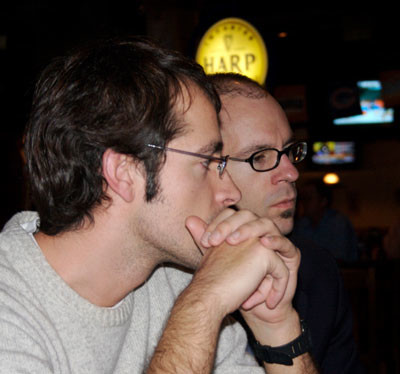
|
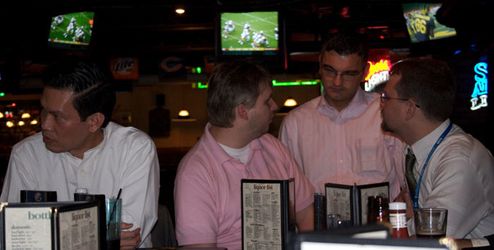
|
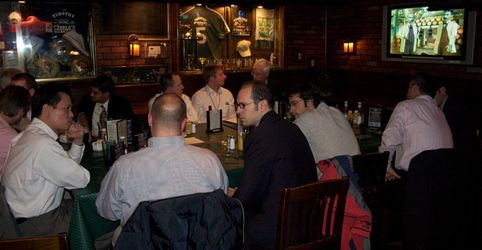
|

|
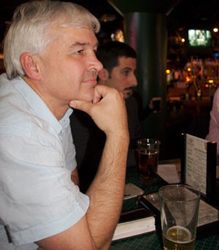
|

|
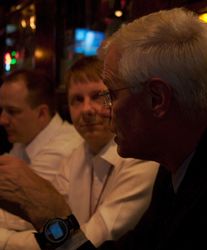
|

|
This page has been viewed
zero
times.